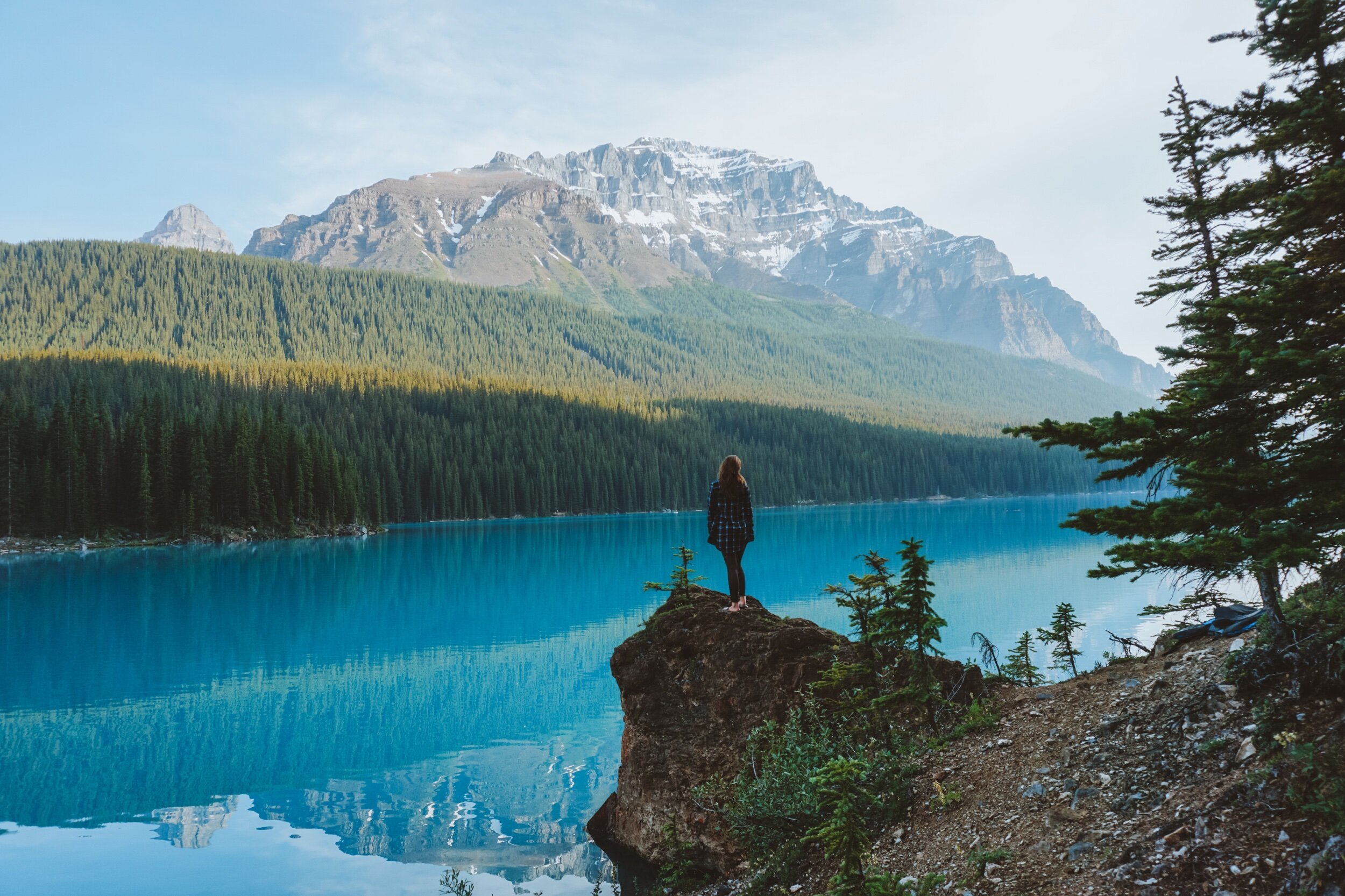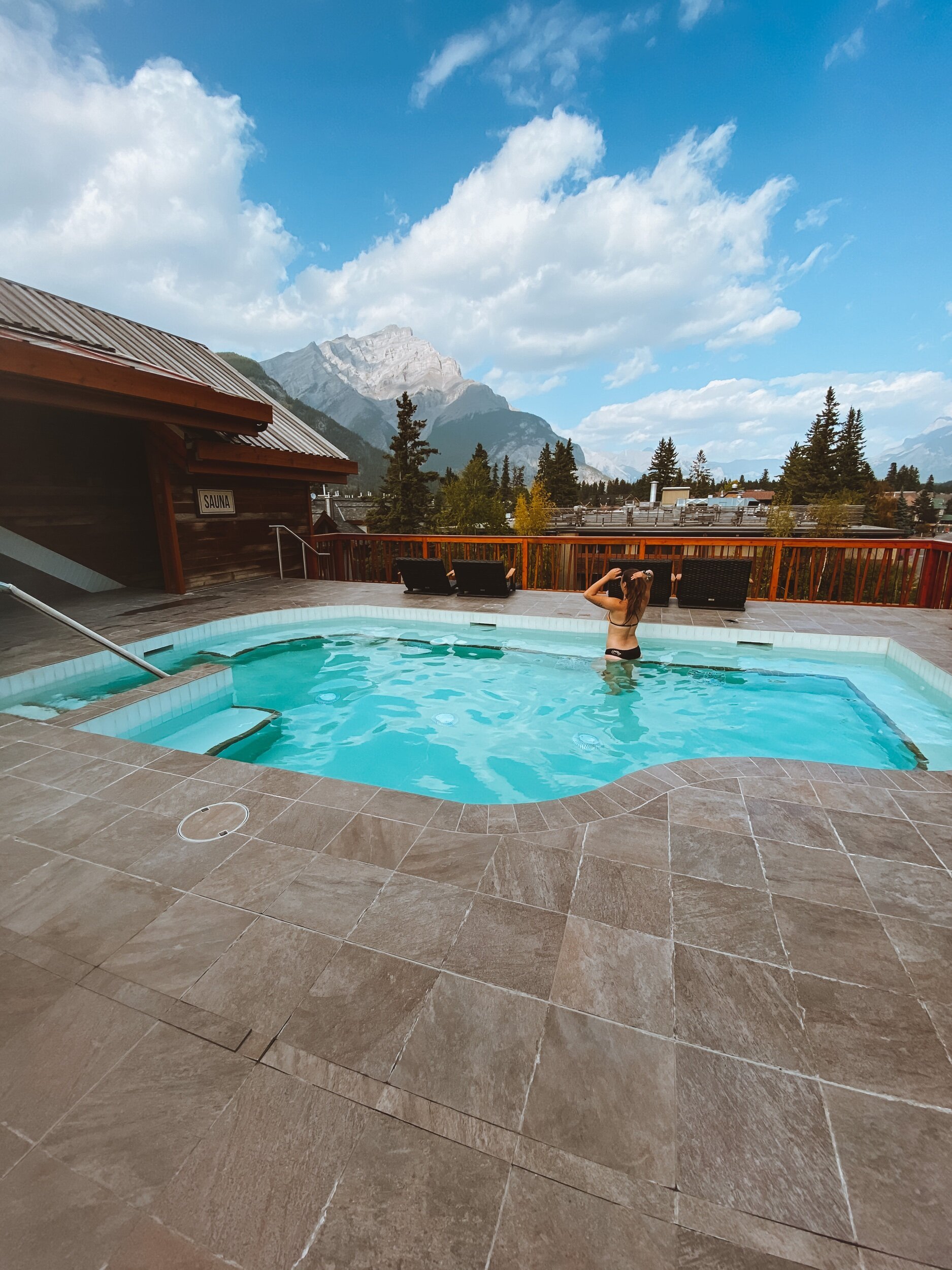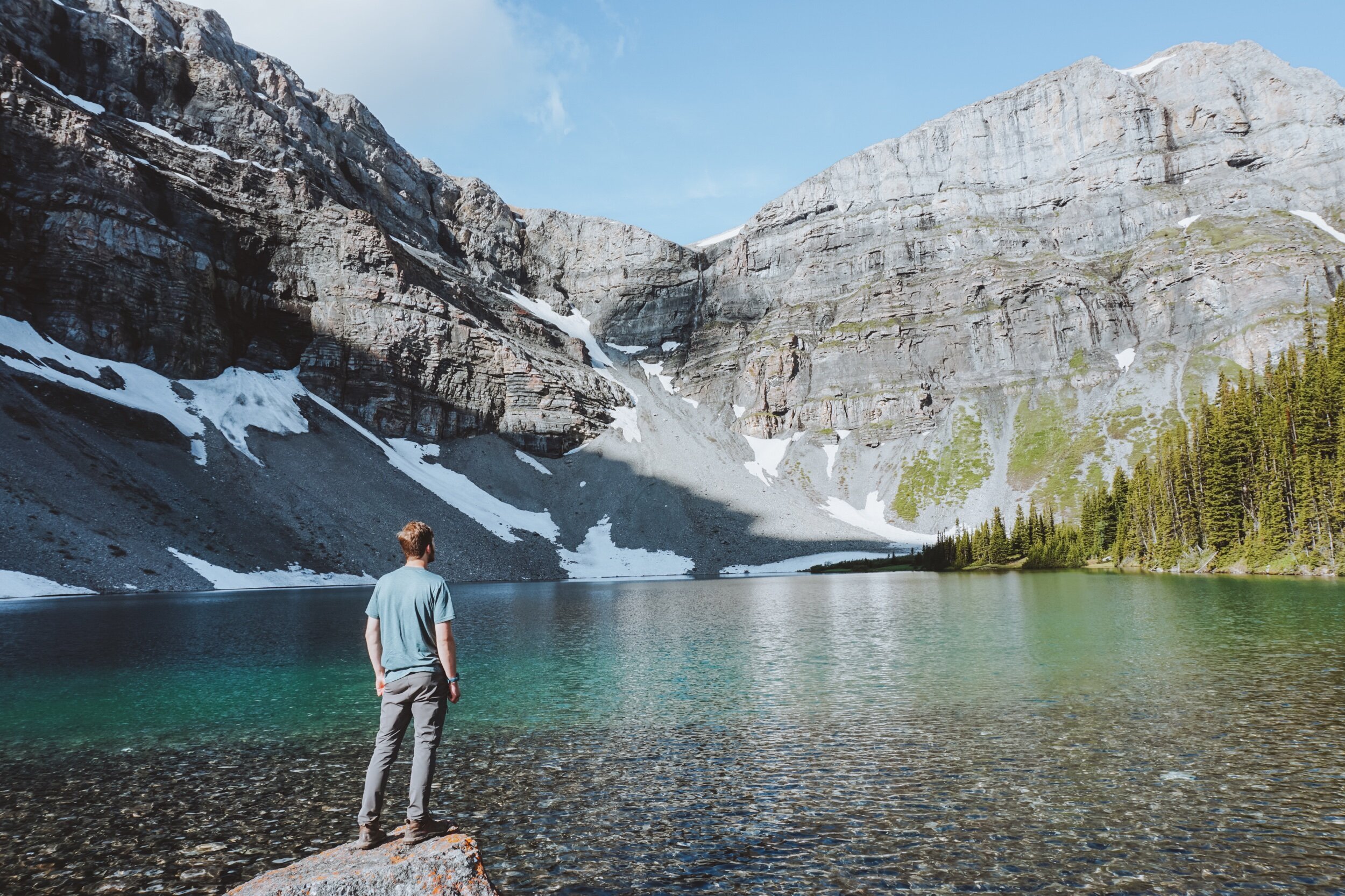A Beginners Guide: Banff National Park
This is your beginners guide to all things Banff National Park — Facts, Attractions, Lakes, Camping and more.
Banff National Park History & Facts
Banff National Park. Home of the remarkable tourist town of Banff – the highest town in Canada at 4,537 ft above sea level. Also home of the Banff Unicorn, throwback to 2008 (If you don’t know what I’m talking about, you need to watch this). This National Park was established back in 1885, being Canada’s first ever National Park (and the third in the world). When the Park was established it was only 25 square kilometers, which was around the base of Sulphur Mountain, and now the Park is as large as 6,641 square kilometers, being the second largest National Park in Canada, behind Jasper National Park. Between the 1,600 kilometers of hiking trails, 45-35 MILLION year old Mountains and 1000’s of Glaciers, there are endless possibilities of things to do in Banff.
Moraine Lake, Banff National Park
Banff National Park is home to some of the most beautiful lakes in the whole world. Some of those lakes include Lake Louise, Moraine Lake and Lake Minnewanka. Lake Louise and Moraine Lake are well known for their turquoise blue, glacier cold waters – If you jump in, prepare for your breath to be taken away. These are some of the biggest tourist attractions in the whole park, so I suggest arriving early before the crowds and tour buses fill the parking lots. We got to Moraine Lake at 8 am and happened to snag the last stall in the lot. Wake up early one morning, pack some hot chocolate and watch the sun rise over the mountains and enjoy the quiet, calm waters while you can before everyone gets there! While Lake Louise is the largest NATURAL lake in the park, Lake Minnewanka is the largest lake in the park, and it is man-made. They built the dam, which you can drive over, and after it was built, the water levels rose and ended up flooding Minnewanka Landing, a tiny resort village. Because the water is so cold, the remains of the town have been somewhat preserved, so if you ever get a chance to go Scuba Diving, TAKE IT!
Everything about Banff is so captivating and beautiful, including the animals. Banff National Park is home to over 50 species of Mammals; Bears, Beavers, Elk, Caribou, Deer, Sheep, Moose, Wolves, Bald Eagles, Owls, Pumas and so much more. You ALWAYS need to keep your eyes peeled for wildlife while driving, hiking, or any sort of activity. If you happen to be driving and see an animal, some people tend to stop – DON’T DO THIS. Keep going. For starters, you are holding up traffic, secondly, not only are you now putting yourself at risk but you are also putting the animal at risk now. If you do choose to stop, do not get out of your vehicle; I saw someone do this, with their toddler son, maybe 4 feet away from a Mama Moose and her babies… not the brightest idea because there is always that chance that wildlife will charge at you. Look at this article CBC posted about a bull elk charging into a Parks Canada pickup truck while it was stopped at a traffic light.
Mount Norquay Sightseeing Chairlift, Town of Banff
Popular Things To Do in Banff National Park
Some coolest “attractions” that Banff has to offer would be Johnston Canyon, Cave & Basin National Historic Site, the Northern Lights (Aurora Borealis) and the Hot Springs. Johnston Canyon has numerous trails, being one of the busiest places in the Park. Some of the trails are open year round with a guide required in the winter, and some only open in the spring/summer. Make sure you check to see if the trail you want to take is actually open for the time of year you are planning on going. To get to Johnston Canyon from Banff head west on the Trans-Canada Hwy for approximately 5 kms. Take the exit for the Bow Valley Parkway and continue west for 18 kms until you see the sign for Johnston Canyon on your right. There are 3 main trails that people take which are the Lower Falls, the Upper Falls and the Ink Pots. Both of the Falls give you incredible views of the rushing waterfall. The Ink Pots consist of several pools made up of greenish colored mineral springs that bubble to the surface and can be reached from the Upper Falls. If you have time, carry on to the Ink Pots to leave the crowds behind you and get some solitude. The hike from the Upper Falls to the Ink Pots takes approximately one hour. All the trails are accessible year round. The Cave & Basin National Historic Site is Canada’s world-famous, naturally occurring, warm mineral spring with beautiful emerald colors, a must-see for first timers in Banff. This is the birthplace of Banff National Park. There are tours available if you want to learn about the nature and history behind one of Canada’s most treasured icons. There are also some short walking trails if that start at the parking lot of the Cave and Basin site - here is some more info on them! If you’ve never seen the Northern Lights, be sure to plan a trip around August or September, as those are the best times to see the Northern Lights in the Park.
If you’re looking for something more adrenaline pumping, in the winter there is numerous ski resorts so whether you ski, snowboard or none of the above. There are tons of Chalets along the mountain for you to grab a drink and relax, if that’s more your style. You will find something to do at either Sunshine Ski Resort or Lake Louise Ski Resort. If you’re looking for a little more action in the summer, there are tons of scrambles you can do that will get your blood pumping. We recently purchased this book for planning our scrambles and we absolutely love it. If you’re into scrambles, I suggest investing in the Alan Kane Book of Scrambles!
Accomodations in Banff National Park
Hotels
Listed below are places I have stayed and would recommend on your next visit to Banff.
Rocky Mountain Resort
This resort is all cabins and suites with each room equipped with a fully stocked kitchen. One of the best ways to save money when staying in a hotel in Banff is to make sure you have a kitchenette so you can cook all your own meals, because food in Banff is NOT cheap! They also have wood burning fireplaces (wood extra $), an outdoor hot tub and indoor pool and hot tub. There is a grill and large entertainment and meeting room. This resort is on the edge of town though, quite close to the Trans Canada, but there is a shuttle provided from the hotel to the Fox Hotel.
Moose Hotels & Suites
I had the pleasure of partnering with Banff Lodging Co. to write a blog post featuring this hotel! Click this link if you’d like to read about my experience at this hotel!
Caribou Lodge & Spa
Douglas Fir Resort & Chalets
Tunnel Mountain Resort
Fairmont Banff Springs
Camping
In Banff National Park, there are 14 different front-country camping options. Here are the prices based per day (2023 Updated Prices):
Two Jack Main Equipped Campsites - $74.75
Two Jack Main - Unserviced with washroom building having toilets only - $23.00
Two Jack Lakeside - Unserviced with washroom building having toilets and showers - $29.25
Tunnel Mountain Village - Water, sewer, and electrical - $40.75
Tunnel Mountain Village - Unserviced with washroom building having toilets and showers - $29.25
Tunnel Mountain - Electrical - $34.50
Lake Louise - Unserviced with washroom building having toilets and showers - $29.25
Lake Louise - Electrical - $34.50
Lake Louise - Overflow - $11.50
Johnston Canyon - Unserviced with washroom building having toilets and showers - $29.25
Castle Mountain - Unserviced with washroom building having toilets only - $23.00
Protection Mountain - Unserviced with washroom building having toilets only - $23.00
Mosquito Creek - Primitive - $18.75
Waterfowl - Unserviced with washroom building having toilets only - $23.00
Rampart Creek - Primitive - $18.75
Silverhorn Creek - Primitive - $16.75
If you’re into backcountry camping, Banff National Park also has some options for you!
Backcountry Reservation Fee, per person, per night - $12.75
Grazing Permit, per horse, per day - $2.50
Grazing Permit, per horse, per month - $31.00
If you're not so much down for camping in a tent or trailer, there are also oTENTik options in the Park- a comfortable way to camp. If you don't know what they are, read about them here!
Park Pass
To enter the park, you will need to get a park pass. You can either go with the option of a Day Pass or get a Discovery Pass, which is annual.
Youth - Free
National Park Daily Entry
Family/Group (Up to 7 people) - $21.00
Adult - $10.50
Senior - $9.00
Discovery Pass
Family/Group (Up to 7 people) - $145.25
Adult - $72.25
Senior - $61.75
Passes can be purchased at the gate door
To order Discovery Passes online, click here
Banff National Park Map







